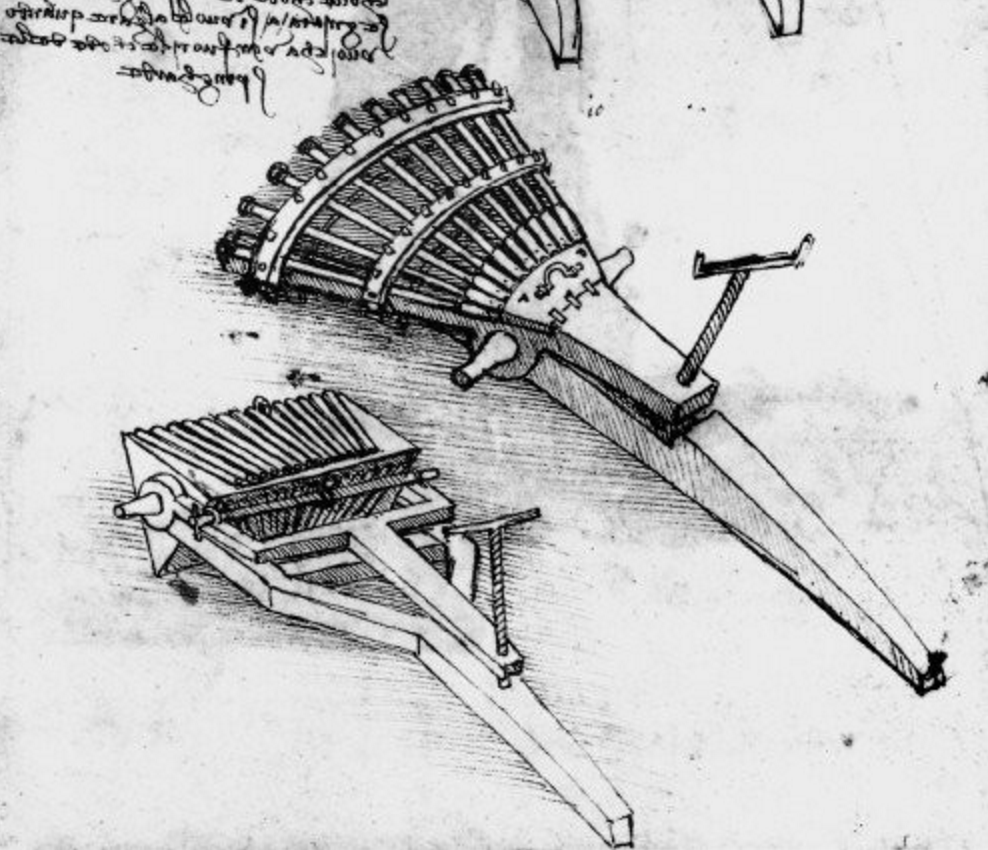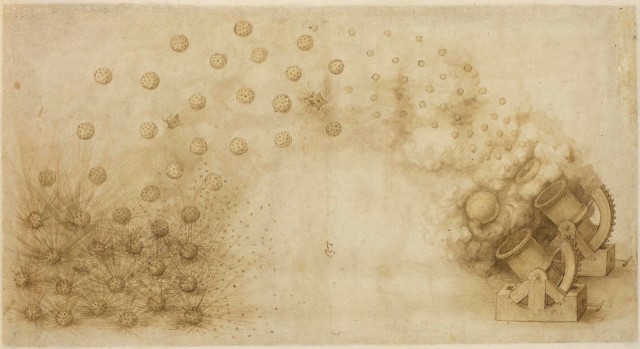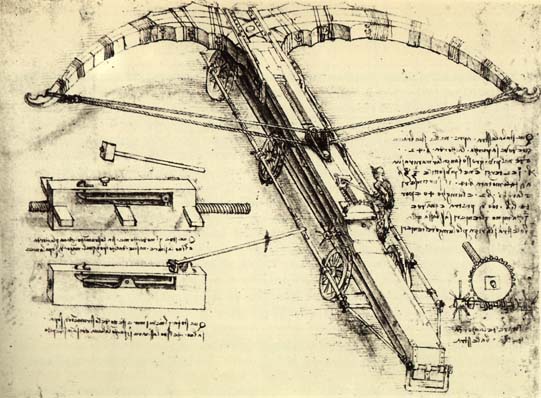
We think of Leonardo da Vinci as one of the great humanists, a thinker and creator whose achievements spanned the realms of art, architecture, natural science, engineering, and letters. We less often think of him as an innovator of the tools of as destructive a practice as war, but a true polymath — and the life of Leonardo more or less defines that concept — knows no boundaries. The website Leonardo da Vinci Inventions lists among the machines he came up with an armored car (“precursor to the modern tank”), an 86-foot crossbow, and a triple barrel cannon (at a time when even gunpowder itself hadn’t yet attained worldwide use).

Many of Leonardo’s inventions, no matter how thoroughly he diagrammed their designs and mechanics in his notebooks, never got out of the realm of the theoretical in his lifetime — and some remain machines of the imagination. But as Nick Squires reported in the Telegraph a few years ago, a late 15th-century cannon dug up in Croatia “bears a striking resemblance to sketches drawn by the Renaissance inventor, notably in his Codex Atlanticus — the largest collection of his drawings and writing. Mounted on a wooden carriage and wheels, it would have allowed a much more rapid rate of fire than traditional single-barreled guns — in a precursor to modern day machine guns.”

Italian-renaissance-art.com offers more detail on all these Leonardo-designed weapons, and the historical context which drove him to work on them:
He was a man of his time and the need for military engineers provided him with employment, travel opportunities, and the chance to continue his scientific work unhindered. Renaissance Italy was a collection of independent city states who became engaged in incessant warfare with each other.
“This provided a market for the technically advanced weapons needed to gain military advantage over the enemy” — and an opportunity for Leonardo to work out his ideas for “new weaponry, bridging, bombarding machines, trench draining,” and more. Leonardo’s work during this period included 15th-century blueprints for “an armored vehicle made from wood and operated by eight men” turning cranks, an antiquity-inspired “scythed chariot,” breech-loading and water-cooled guns not entirely different in concept from the steam cannons used in the World War II, and “a repeating ‘machine gun’ operated by a man-powered treadmill.”

You can see a real-life example of Leonardo’s leaf-spring catapult built by a Society for Creative Anachronism member here. But if you try to follow the instructions and assemble his other ingenious military devices, prepare for disappointment. The Telegraph’s Tom Leonard wrote up an early-2000s BBC documentary that claimed this Renaissance Man’s Renaissance Man “inserted a series of deliberate flaws into his inventions to make sure that they could never be used,” for instance, “when the tank, a tortoise-like contraption, was tested by the Army, it immediately became clear that its gears had been set against each other.”
Leonardo possibly crippled his own designs in order to serve the function of absent “patent laws to protect him from having his designs copied,” and possibly because he “was a pacifist who was aware that his warlord masters might try to find military uses for his inventions.” Either way, at least he died a few hundred years too early to witness the First World War, in which tanks, machine guns, and all the rest of it turned into surely more horrifying a spectacle than all the battles of Renaissance Italy put together.

Related Content:
Original Portrait of the Mona Lisa Found Beneath the Paint Layers of da Vinci’s Masterpiece
Leonardo da Vinci’s Handwritten Resume (1482)
Leonardo Da Vinci’s To Do List (circa 1490) Is Much Cooler Than Yours
Based in Seoul, Colin Marshall writes and broadcasts on cities, language, and style. He’s at work on a book about Los Angeles, A Los Angeles Primer, the video series The City in Cinema, the crowdfunded journalism project Where Is the City of the Future?, and the Los Angeles Review of Books’ Korea Blog. Follow him on Twitter at @colinmarshall or on Facebook.


hi
sup
gotta keep the trend
I love you more than anything:)